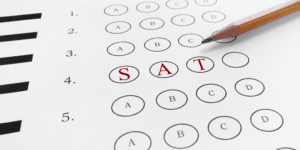Learning how to get a 504 Plan? How will it help your child? What does a 504 Plan include? What are the next steps?
If your child’s teacher or school administrator has recommended “getting her on a plan,” don’t panic. This “plan” is nothing to be concerned about. In fact, a 504 plan may be the key to your child’s educational success.
What is a 504 plan?
In short, a 504 plan is the personalization of your child’s school day. For kids with mild disabilities that affect their learning to a moderate extent, a 504 plan guarantees specific educational accommodations. In the same way that a child with poor vision may need glasses to participate meaningfully in school, children with attentional issues may be every bit as intelligent as their peers but unable to show it without certain accommodations, such as using a computer to write or receiving extra time on a test. A 504 plan lays out the precise services that the child needs, and it will stay with her even if she changes teachers or schools.
The name “504 Plan” refers to Section 504 of the Rehabilitation Act of 1973, which prohibits discrimination of children with disabilities in schools. Schools are responsible for providing a Free and Appropriate Public Education (FAPE, in teaching-lingo) to all children, “appropriate” being the keyword. What’s appropriate for some may not be for others, so the school is legally required to identify children with disabilities and figure out what “appropriate” means for them — at no cost to the family.
For kids with disabilities that severely impact their ability to learn, such that they require specialized instruction different from the grade-level curriculum, an Individual Education Plan (IEP) is more appropriate. Often, kids who have disabilities are first evaluated for an IEP, and placed on a 504 plan if they don’t meet the criteria for this level of services.
Who qualifies?
The language of Section 504 does not specify particular disabilities, just that the disability must substantially limit one or more major life activities (such as walking, communicating, etc.). In addition, the disability cannot be temporary, such as having a broken leg. Any child attending a school that receives federal funding may be eligible for a 504 plan, from preschool through college or vocational school. Although each school district may handle the evaluation differently, every school is required to offer and implement 504 plans.
A school cannot proceed with 504 accommodations without parental consent. If you disagree with the plan or believe it is inadequate, you can withdraw consent and request a mediator or an impartial hearing officer to help guide a fair discussion. If you still aren’t receiving the services your child needs, you can file a complaint with the federal Office of Civil Rights or file a lawsuit.
How do I get a 504 plan?
Schools are responsible for identifying and providing services to children with disabilities, so chances are, your school will spot a problem before you will. If this isn’t the case, have a chat with your child’s teacher and share your concerns. If that doesn’t seem to work, tell the principal that you’d like to request an evaluation.
Usually, the school will evaluate the child for special education first, and if she doesn’t qualify (i.e. she doesn’t need specialized instruction), then the 504 plan is the next option. The school is required to provide all of the evaluations, documentation, and meetings, as well as gather a team who knows the child best (parents, teachers, counselors) to find the most effective solution. While IEPs are spearheaded by a special educator, 504 plans may be coordinated by guidance counselors, teachers, special education coordinators, or principals.
In reality, the timeline for completing this evaluation process varies significantly among schools. In districts with fewer resources, it can take weeks or months before your child is seen by an evaluator. Parents who have the financial means will often hire a private psychologist to conduct the evaluation. If this isn’t an option, it may require persistent, assertive requests that a school-based professional provide the necessary testing to determine if your child qualifies for a 504.
If a disability has not yet been established, you will likely begin to pursue the steps outlined in the special education timeline. If you have a diagnosis from your pediatrician, it may be as simple as attending a couple of meetings with the school’s administrators. And just as with an IEP, you will meet each year to make sure the 504 plan is still accurate and effective as your child grows. Remember that, even if your child isn’t immediately eligible for special education, she may be in a few years. If you continue to see your child struggle, even with the 504 plan, you can request another evaluation to determine if she qualifies for an IEP.




